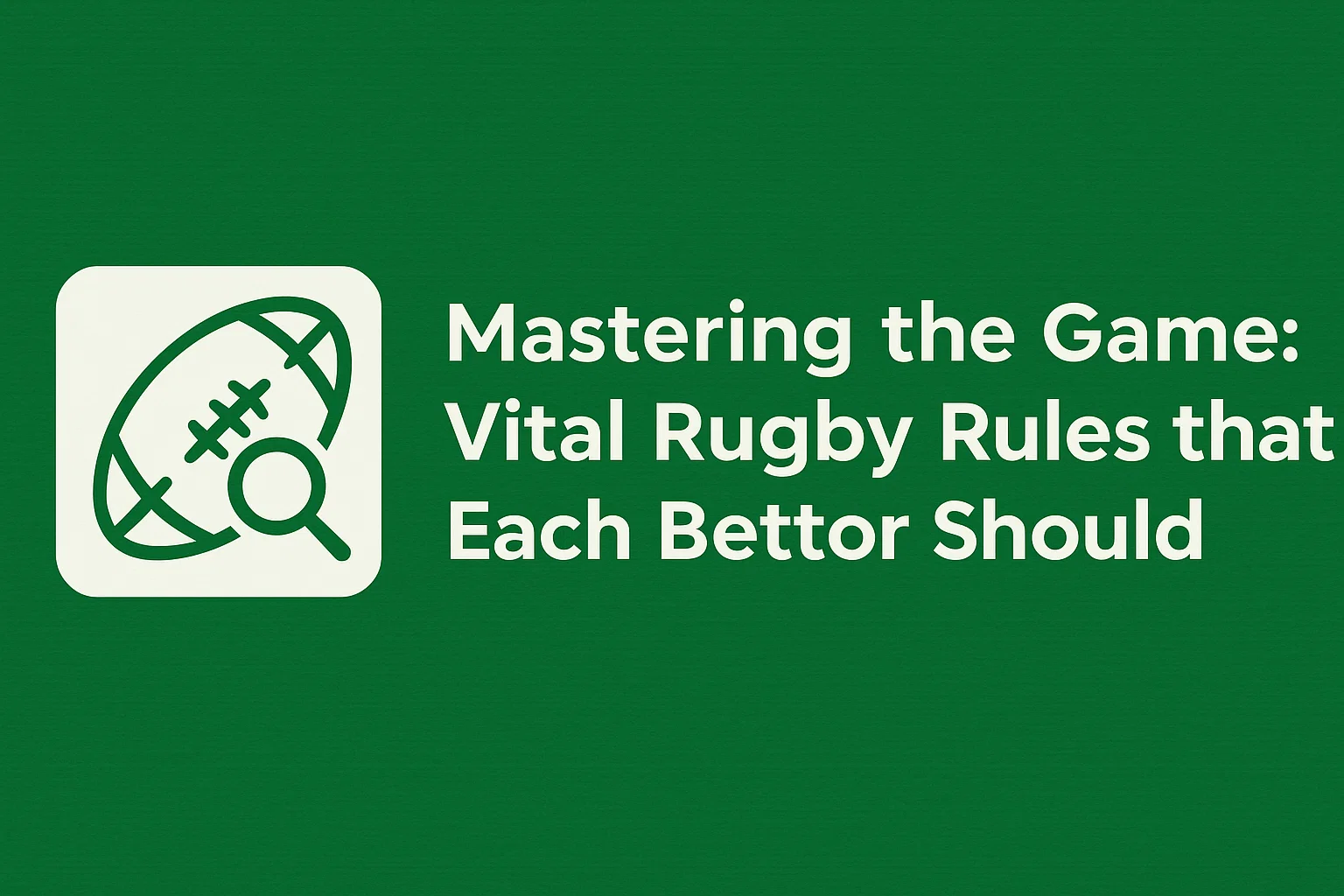
There are 15 players on the field for each team at all times, 8 forwards and 7 backs.
A coin toss will determine which team gets to start the game. The ball is initiated with a kick.
Rugby scores are earned on scoring actions. As a bettor or learning rugby odds comparison for improved wagering, you'd be interested in learning the scoring system:
- Try – 5 points. Awarded when a player carrying the ball into the in-goal area touches the ball to the ground.
- Penalty try – 5 points. Awarded when a try is prevented by foul play. It's kicked as if scored centrally between goalposts, making conversion easier.
- Conversion – 2 points. Awarded for a successful kick between the goalposts after a try. The ball must pass between the uprights and above the crossbar.
- Penalty kick – 3 points. Awarded for certain rule breach; the kick is kicked from the spot of the infringement.
- Drop goal – 3 points. A goal kick-drop-kicked during open play. The ball must first be touched on the ground before kicking; drop-kicking directly from the hands is not allowed.
Restrictions of Basic Game
There is no passing forward. This means that a player may not pass the ball to another player in front of the opponent's goal line. Players are not also allowed to:
- Charge or push other players when running with the ball.
- Block players intentionally when offside.
- Blitz through teammates breaking a ruck, maul, scrum, or lineout.
- Slate an opponent with the hand.
- Tripping, kicking, or stepping over an opponent.
- Tackle or block an opponent who has just kicked the ball and is not chasing it.
- Grab, push, tackle, block, or hold an opponent off the ball (other than in a ruck, maul, or scrum).
Rugby Field
The rugby pitch is 100 meters by 70 meters (144 meters, including in-goal areas) rectangular and grass-covered. The markings include the halfway line and parallel to the goal lines the 22-meter lines.
The goalposts are in an H-shape, with the uprights 5.6 meters wide and a crossbar at 3 meters.
Rugby Equipment
The rugby ball is ellipsoidal in shape, leather or artificial, and normally water-resistant treated. Size: 280–300 mm long, 740–770 mm crosswise circumference, 580–620 mm lengthwise circumference, and weighing 410–460 grams.
Player equipment:
- Jersey and shorts
- Studded boots
- Protective gear: knee and elbow pads, fingerless gloves, shin guards, shoulder pads, mouthguard, and scrum cap.
All the equipment has to be compliant with International Rugby Board (IRB) standards. Players with non-compliant equipment cannot play.
Set Pieces in Rugby
Set pieces are: scrum, ruck, maul, lineout, mark (fair catch), tackle, free and penalty kicks.
Scrum
A restart after minor infractions or stoppages. There are three rows of players per team that curl around one another to create a tunnel. The scrum-half feeds the ball in to the tunnel, and players try to hook the ball with their feet.
Scrums are held where the offense took place (min. 5 meters from sidelines and goal lines). The feeding is done by the attacking or non-offending team. The scrum is terminated once the ball has exited or been otherwise cleared.
Ruck
Is when opposing players are in an in contact and standing position over the ground ball. Open play is terminated. Players try to play or gain the ball on their feet.
A ruck is complete when the ball emerges or crosses the goal line. In its unresolved form, a scrum is granted by the referee.
Maul
Evolved when a ball-carrier is tackled by their opponents and teammates bind on to them as they go forward toward the goal. Three or more are taking part (the ball-carrier and one each from opposing teams).
A maul is finished when the ball is grounded, released, or crosses the goal line.
Mark (Fair Catch)
A mark is indicated when a player catches an opposing kick in their 22-meter area or in-goal and shouts "Mark!" when catching. The result is a free kick.
Tackle
Occurs when a ball carrier is brought to the ground or the ball is on the ground due to pressure from one or more players.
Lineout and Touch
The ball is in touch when:
- It is kicked across the sideline.
- It is touched or crosses the sideline upon any movement of the ball.
- A ball carrier steps over or on the sideline.
- A ball catcher steps over or on the sideline.
To resume play, a lineout is employed. Forwards from both sides form a line at right angles to the sideline, 1 meter apart, 5–15 meters from the sideline. The ball is tossed into the gap between the lines.
Players are permitted to lift up their teammates in order to catch the ball. Contact is limited to shoulder-to-shoulder — tackling a leaping player is not allowed.
Officiating
The refereeing panel consists of the head referee and two assistant referees. VIP games have a video referee in communication with the head referee via radio.
Referees may issue:
- Red card – permanent dismissal.
- Yellow card – suspension for a period.
Competition
Rugby World Cup – the main competition, held every four years.
Six Nations Championship – annual European competition featuring England, Ireland, Italy, Wales, France, and Scotland.
The Rugby Championship – annual Southern Hemisphere competition between Australia, Argentina, New Zealand, and South Africa.
The side with the higher points total after full time wins the game.